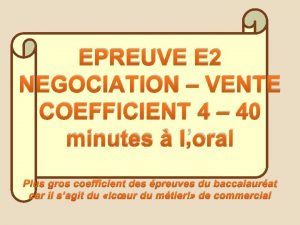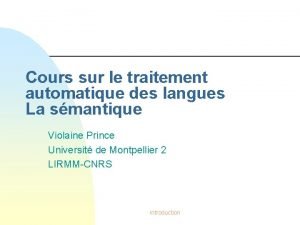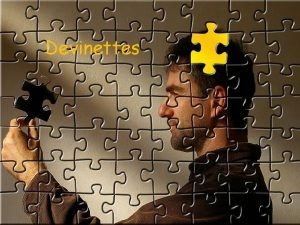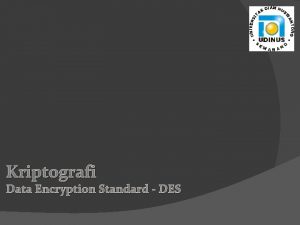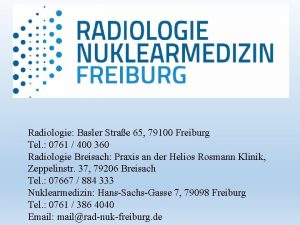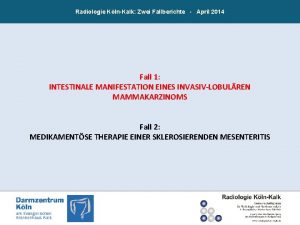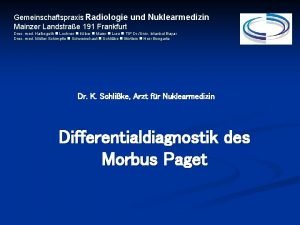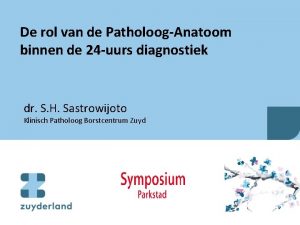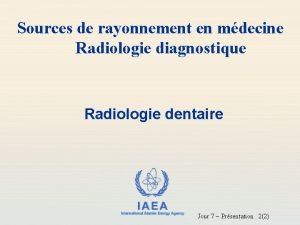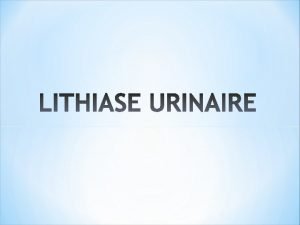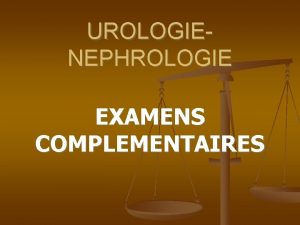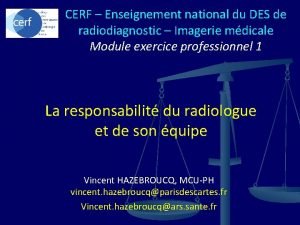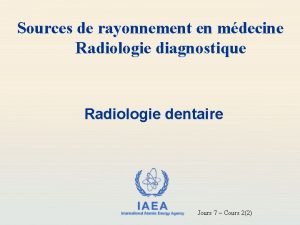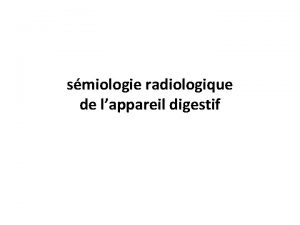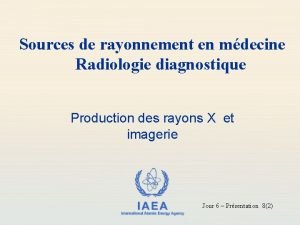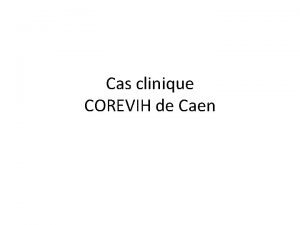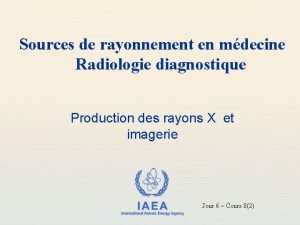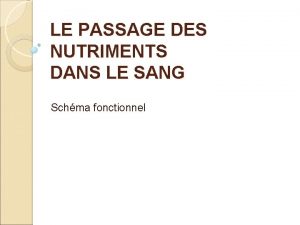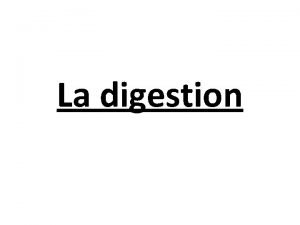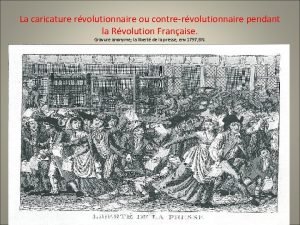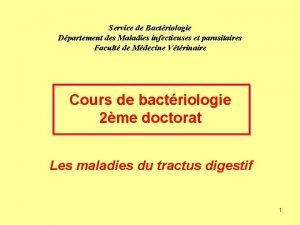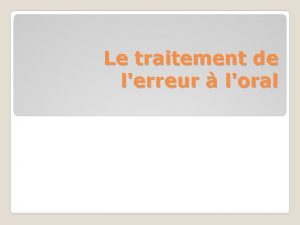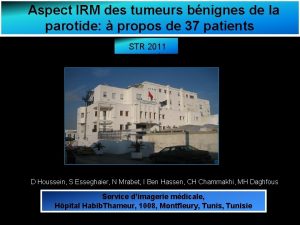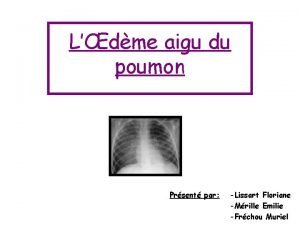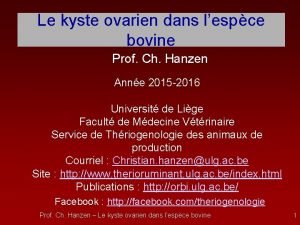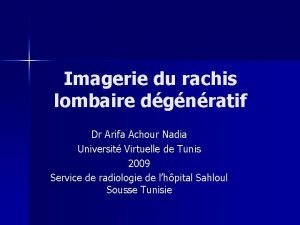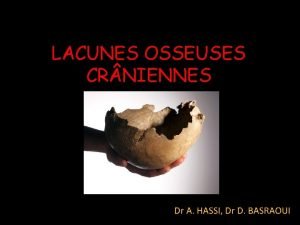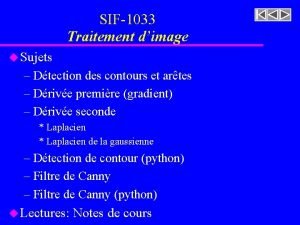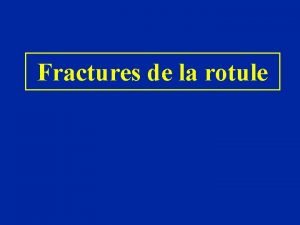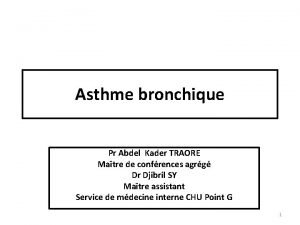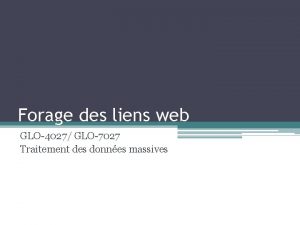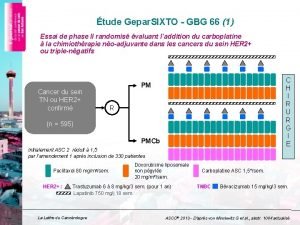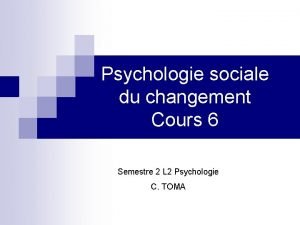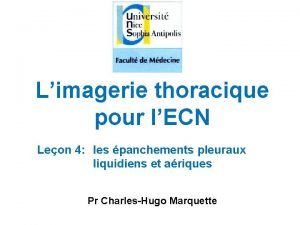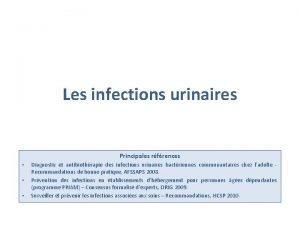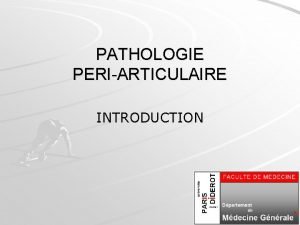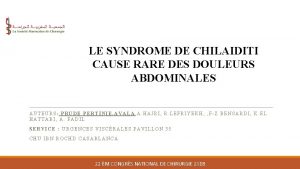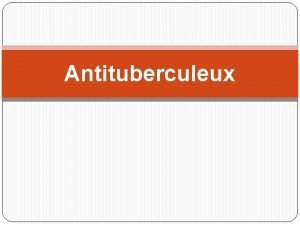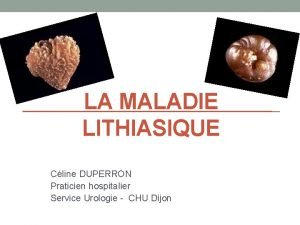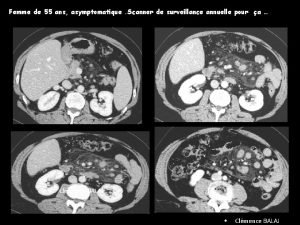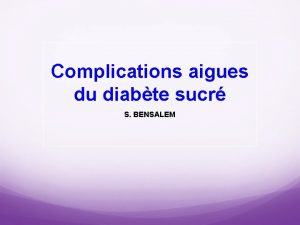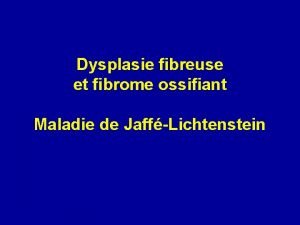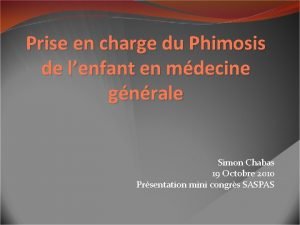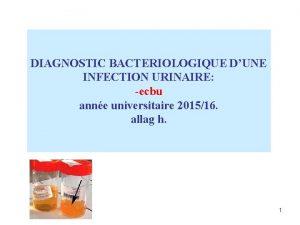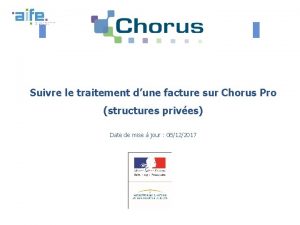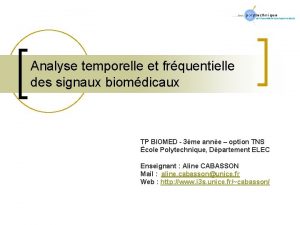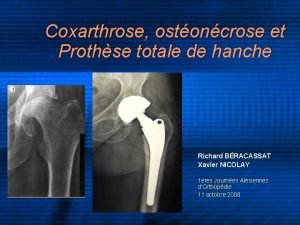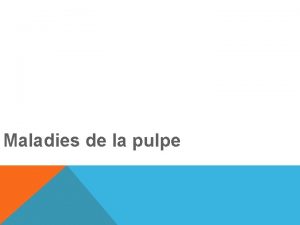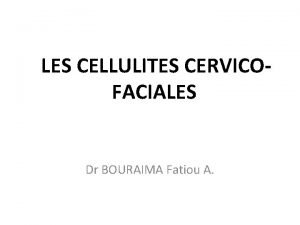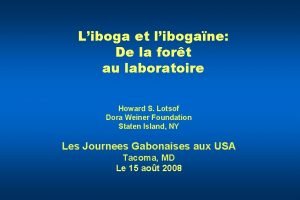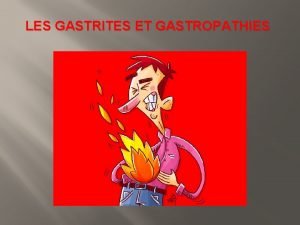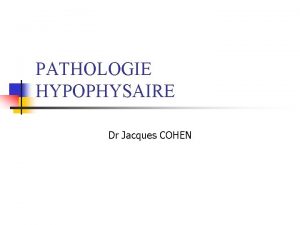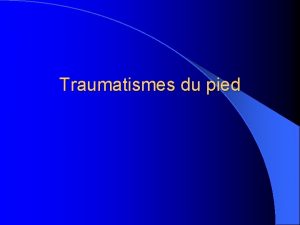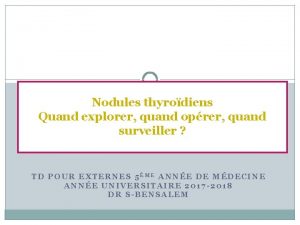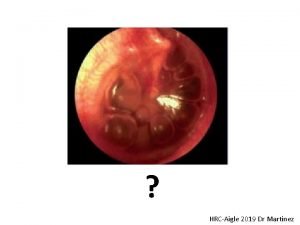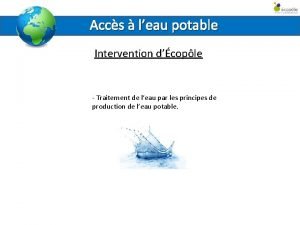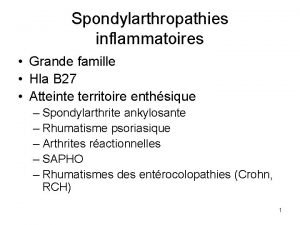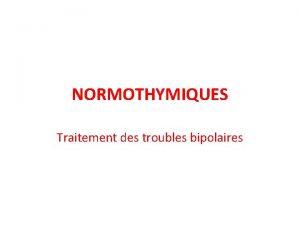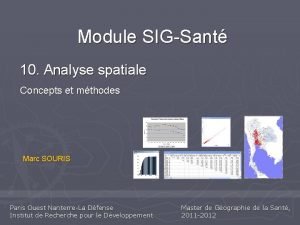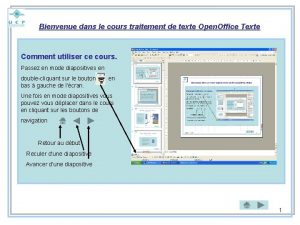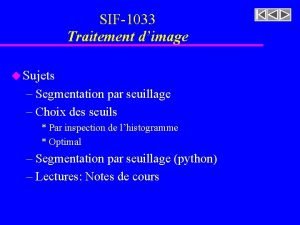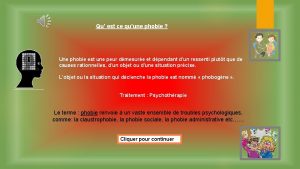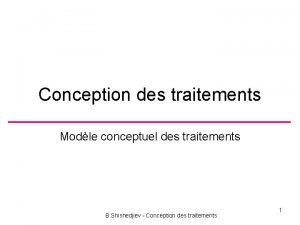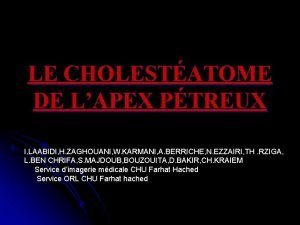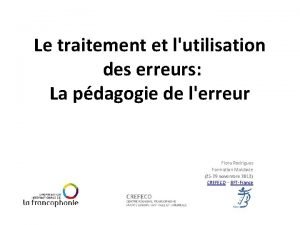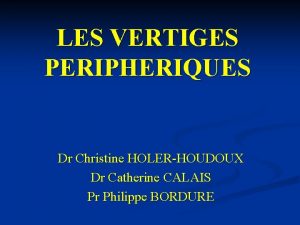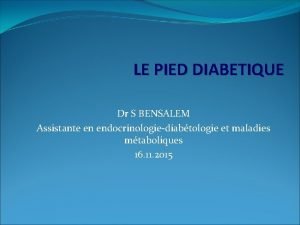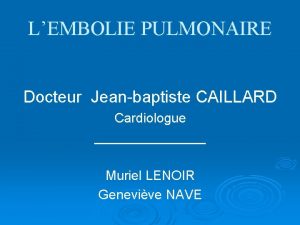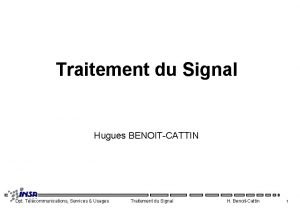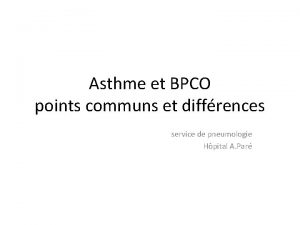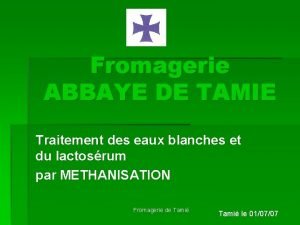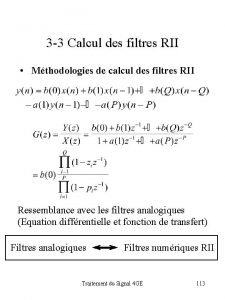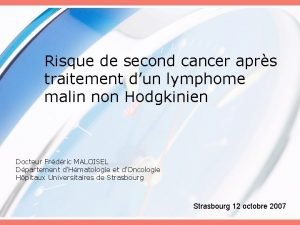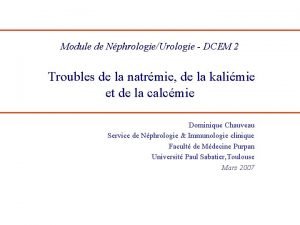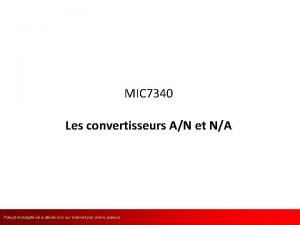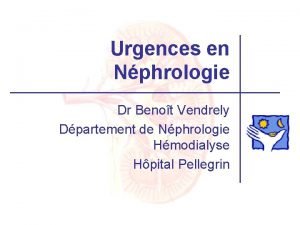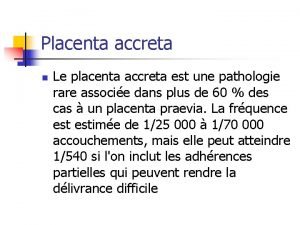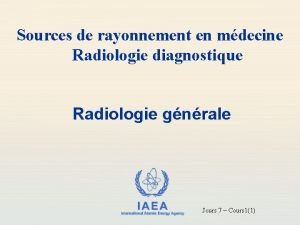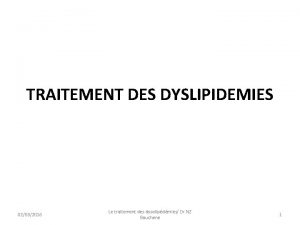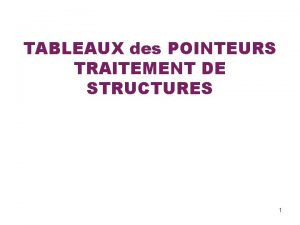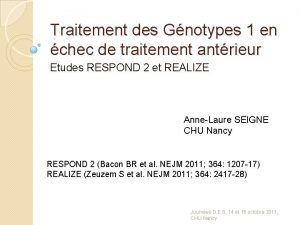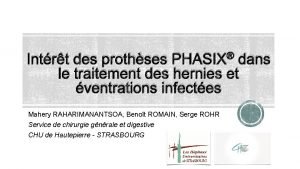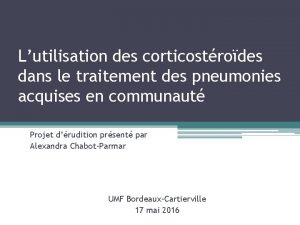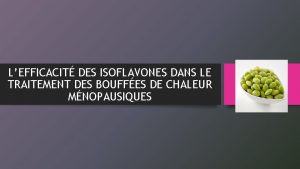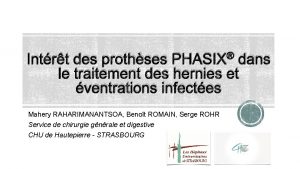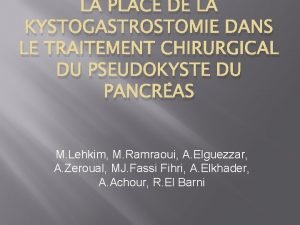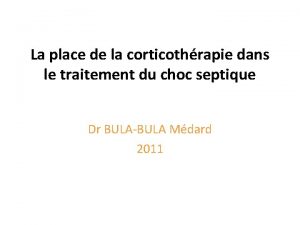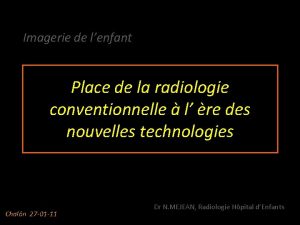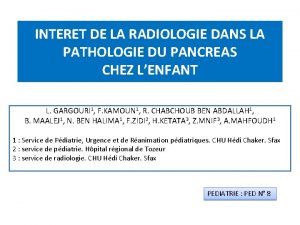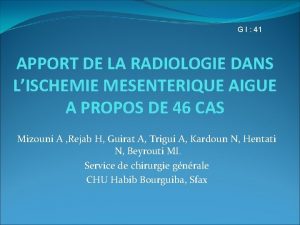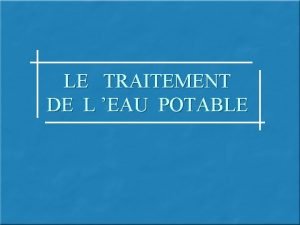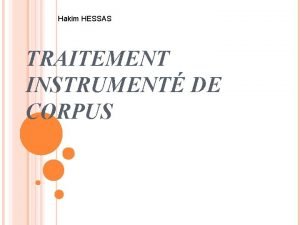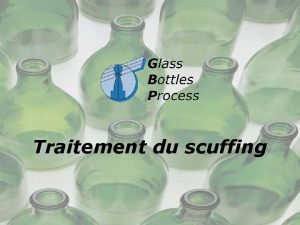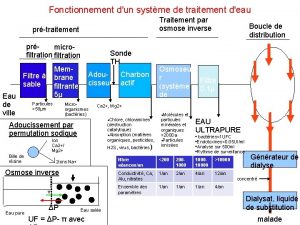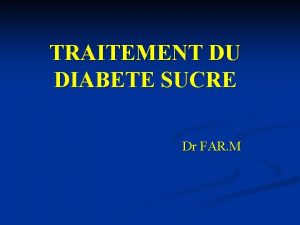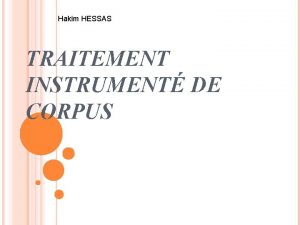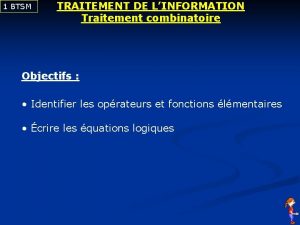Place de la Radiologie dans le traitement des




























































































- Slides: 92

Place de la Radiologie dans le traitement des AVC ischémiques: La revascularisation cérébrale Serge BRACARD CHU Nancy 2009

Plan • Techniques • Indications • Organisation

Techniques • Thrombolyses chimiques – Thrombolyse IV – Thrombolyse IA – Thrombolyse IV + IA – Anti Gp IIb-IIIa • Thrombolyses mécaniques • Associations

Résultats 1. Taux de reperméabilisation concept: la restauration du flux permet les conditions favorables à la récupération… 2. % parenchyme sauvé 3. Résultats cliniques 4. Complications


Augmentation de la pénétration du thrombolytique dans le thrombus par application trans-crânienne d’ultrasons • CLOTBURST – 126 Patients r. Tpa IV – Randomisation +/- ultra-sons (DTC continu 2 MHz) – Reperméabilisation 49% versus 30% – Pas de différence sur la récupération clinique Alexandrov NEJM 2004, 351, 2170 -8 • Intérêt des microbulles Molina stroke 2006, 37, 425 -429 – MUST (Microbubbles and Ultrasound in Stroke Study) – Etude multicentrique, française (PHRC), contrôlée, randomisée – Occlusions M 1, alteplase iv <3 h vs alteplase + Doppler transcrânien + microbulles iv < 3 h • Augmentation du risque hémorragique ?

Thrombolyse IA: PROACT II • 180 patients avec occlusion ACM < 6 h • R-pro. UK IA + héparine vs héparine • Pas de thrombolyse mécanique R-pro. UK + héparine Héparine TIMI 2 -3 >2 h 66% 27% TIMI 3 > 2 h 19% 2% m. Rs 0 -2 à 3 mois 40% 25% ICH sympto 10% 2% Door to ia treatment time : 5, 3 h

Recanalisation

Association IV +IA • IA est plus efficace en termes de reperméabilisation mais nécessite 1 h pour sa mise en route • IV est moins efficace mais plus rapide à mettre en œuvre IV +IA devrait associer les bénéfices deux…

Interventional Management Study (IMS) • Rt-PA iv 0. 45 mg/kg < 3 h + ia 22 mg en 2 h • 80 patients • Seulement 5% des patients étaient recanalisés après traitement iv • Injection dans thrombus • TIMI 3 : 11% • TIMI 2 -3 : 56% • Délai traitement ia : 217+/-46. 7 min

Interventional Management Study II (IMS II) • • • Rt-PA iv 0. 6 mg/kg < 3 h + ia 22 mg en 2 h 76 patients Injection dans thrombus + sonde à ultrasons EKOS TIMI 2 -3 : 69% Récupération, mortalité= NINDS Interventional Management Study III (IMS III) • IV vs IV+IA+ EKOS ou MERCI (en cours)

Association de produits avec des cibles différentes Thrombus rt-PA Fibrinolyse Exposition de thrombine Activation plaquettaire Anti-GP IIb-IIIa • Thrombus fibrino-plaquettaire • Libération PAI-1

En cardiologie: TIMI 14 Traitement TIMI 3 % (90 min) 57 Hémorragie majeure % Abciximab 32 3 SK faible + abciximab 34 10 SK fort + abciximab 46 10 Alteplase 50 mg+ abciximab 77 7 (1) Alteplase 100 mg 6 Rien n’est démontré en neurologie…

Efficacité: taux de reperméabilisation • Variable • r. Tpa IV seul – d’autant plus efficace que l’occlusion est distale – insuffisant pour les « gros troncs » • r. Tpa IA plus efficace • Associations +++ • Limite actuelle : 60 -70%

Efficacité : Résultats cliniques Study N ECASS Fibrinolytic Time window Mortality ________ Active Placebo Rankin 0 -1 ________ Active Placebo 620 rt-PA- 1. 1 mg/kg 6 h 17. 9%£ 12. 7%£ (14. 6%) (11. 7%) 22. 4%££ 15. 8%££ (19. 4%) (14. 8%) 0 difference (0 difference) NINDS 624 rt-PA – 0. 9 mg/kg 3 h 17%££ 21%££ ECASS II 800 rt-PA – 0. 9 mg/kg 6 h 10. 3%££ 10. 5%££ 54, 3%* 46, 1% ATLANTIS 547 rt-PA – 0. 9 mg/kg 3 -5 h 11%££ 6. 9%££ 36% 34% + 13% SK: Streptokinase; UK: Urokinase; rt-PA: recombinant tissue plasminogen activator; : intent-to-treat population, ( ): target population (intent-to-treat population less protocol violations); ECASS II : analyse post hoc ( but initial: Rankin 0, pas de différence)

Méta analyses Nombre de malades Mort (OR) Mort ou dépendance Tous les essais 5216 1, 31 0, 83 rt-Pa < 6 h 2688 1, 24 0, 79 rt-Pa < 3 h 869 0, 95 0, 55

Study N MAST-E Fibrinolytic Time window Mortality ________ Active Placebo Symptomatic ICH ________ Active Placebo 310 SK - 1. 5 M 6 h 34%* 18%* 45%§ 35%§ 21%* 2. 6%* MAST-I 622 SK - 1. 5 M Aspirin 6 h 27%* 12%* 36%$ 26%$ 8% 1. 3% ASK 340 SK - 1. 5 M 4 h 36%££ 20%££ 12. 6% 2. 4% ECASS 620 rt-PA- 1. 1 mg/kg 6 h 17. 9%£ 12. 7%£ (14. 6%) (11. 7%) 22. 4%££ 15. 8%££ (19. 4%) 14. 8%) 19. 8%£ 6. 5%£ (19. 4%) (6. 8%) NINDS 624 rt-PA – 0. 9 mg/kg 3 h 17%££ 21%££ 6. 4% 0. 6% ECASS II 800 rt-PA – 0. 9 mg/kg 6 h 10. 3%££ 10. 5%££ 8. 8% 3. 4% ATLANTIS 547 rt-PA – 0. 9 mg/kg 3 -5 h 11%££ 6. 9%££ 7% 1. 1% PROACT II 180 IA Pro-UK 6 h 25%££ 27%££ 10% 2% Cleveland group 54 6 h 24%££ - 17% - IA UK SK: Streptokinase; UK: Urokinase; rt-PA: recombinant tissue plasminogen activator; IA: intra-arterial; *: at day 10; § : at day 108; $: at 6 months; : intent-to-treat population, ( ): target population (intent-to-treat population less protocol violations); £ at 1 month; ££: at 3 months; : no placebo group; only PROACT II and the Cleveland group’s study evaluated intra-arterial thrombolysis while the other studies reported in this table evaluated intravenous thrombolysis.


Thrombolyse IV: délai de 3 h? • Délai légal AMM • Méta analyse Hacke 2004 bénéfice au delà? • ECASS III: efficacité entre 3 et 4 h 30 – – 821 patients r. Tpa vs placebo Rankin 0 -1 à 90 jours: 52, 4% vs 45, 2% p=0, 04 Hémorragies symptomatiques: 2, 4 vs 0, 12 p=0, 008 Mortalité: 7, 66 vs 8, 44% Hacke NEJM 2008, 359, 1317 • EPITHET – Thrombolyse IV 3 -6 h chez des patients avec un mismatch en IRM. – A 3 mois volume infarctus non diminué mais pronostic meilleur Davis Lancet neurol 2008, 7, 299 -309

PROACT II - Patients

Intracranial hemorrhage

90 -day Modified Rankin Outcome 0 -2 control r. Pro. UK 3 -4 25% 40% 5 -6 41% 34% 26% 35% P=0, 043

Autres études • Urokinase: – MELT Ogawa Stroke 2007, 38, 2633 – Iv vs IA nancy Ducrocq 2005 J of Neuroradiology – Etude cas témoin (m. Rs 0 -2: 50, 5 vs 34%) Inoue cerebrovasc dis 2005 • r. Tpa – Études observationnelles

IV ou IA • Pas d’étude randomisée importante • Etude de 83 patients avec une ACM hyperdense – Thrombolyse IV: meilleur pronostic avec IV si pas de MCA hyperdense – Thrombolyse IA: pas de différence Agarwal Cerebrovas Dis 2004, 17, 182

Association IV+IA: rt-PA iv 0. 45 mg/kg < 3 h + ia 22 mg en 2 h

Efficacité sur le plan clinique Limite actuelle: 40% de patients autonomes à 3 mois - IV Toutes occlusions confondues - IA et associations : sur les « gros troncs »

FACTEURS PRONOSTIQUES • CIRCULATION COLLATERALE • DELAI • TOPOGRAPHIE

VALEUR PREDICTIVE du CBF • CBF >55% : récupérable > 6 heures • CBF > 35%: récupérable < 6 heures • CBF< 35% : Résultats ? Risques d’hémorragie Ueda, J Cereb Blood Flow Metab 1999, 19, 99 -108

Thrombolyse: localisations Other factors: NIHSS <20, LIT started <4 h Gonner F Stroke 1998, 29, 1894 -900


Thrombolysis - results

600000 IU 900000 IU J 7


CBF CBV MTT




Occlusion en T de la carotide: pronostic effroyable • Evolution spontanée : – mortalité : 41 -50%, dépendance sévère : 29 -51% • Control group of the Duplex sonography in acute stroke study (27 patients avec traitement médical seul ) – Recanalisation (6 h) 1/27 – Hémorragies 6/27 (18%) – Évolution clinique (3 mois) • m. RS 0 -2 • m. RS 3 -5 • décès 0 17/27 (63%) 10/27 (37%) Wunderlich MT et al Cerebrovascular diseases 2005; 20: 355 -361

Occlusion en T de la carotide: pronostic effroyable • Pourquoi? • Deux facteurs principaux – Intéresse les artères lenticulostriées – Pauvreté de la circulation collatérale: l’artère communicante antérieure est elle perméable?

OCCLUSION du « T » CAROTIDIEN : RESULTATS DE LA THROMBOLYSE INTRA-ARTERIELLE CHEZ 21 PATIENTS • Etude rétrospective de 21 patients traités dans les 6 heures – – – 14 femmes, 7 hommes Age: 58. 4 ans (31 -84) NIHSS à l’admission: 18. 9 (12 -33) Délai de traitement: 262. 4 minutes (180 – 330) maladie cardio-embolique : 10 patients (47, 7%)

OCCLUSION du « T » CAROTIDIEN : RESULTATS DE LA THROMBOLYSE INTRA-ARTERIELLE CHEZ 21 PATIENTS • circulation collatérale – Artère communicante antérieure • Présente • Absente 14 7 – Opacification rétrograde de l’ACM • Jusqu’à la région insulaire • Incompléte • Absence 3 cas 9 cas • Technique • thrombolyse Mécanique • Mécanique +chimique 6 cas 15 cas * Urokinase (900. 000 UI): 7 cases * Actilyse (0, 9 mg/kg): 8 cases + 1/15 stenting carotidien cervical (sténose >90%)

Thrombectomie mécanique « Catch , Balt» + 70 mg r. Tpa

Résultats Recanalisation • Immediate en Angiographie : – TIMI 0 6/21 – TIMI 1 5/21 – TIMI 2 -3 10/21 • DTC à 24 heures: Recanalisation - 13 cas (62%) Hémorragies 9 cas Transformation hémorragique 2/9 Hématome symptomatique 7/9 à 3 mois m. RS 1 m. RS 3 -4 décès 2/2 1/7 3/7

EVOLUTION CLINIQUE • A J 7 – – • A 3 mois (Modified Rankin Scale –m. RS) – – – • 7 morts (33, 3 %) (3 complications hémorragique) 14 patients survivants avec un score NIH de 6. 8 m. RS 0 -1 m. RS 2 m. RS 3 -4 10 patients 1 patient 3 patients résultats m. RS 0 -1 m. RS 2 m. RS 3 -4 m. RS 6 47. 7 % 14. 2 % 33. 3 % 4. 8 %

Recanalisation / Evolution Clinique

Conclusions • Le pronostic des occlusions en T de la carotide interne reste sévère – recanalisation (TIMI 2 and 3) moins fréquente que pour M 1 – complications hémorragiques plus fréquentes (7/21) • La thrombolyse intra artérielle améliore le pronostic • La thrombectomie mécanque améliore le taux de recanalisation et son délai

Carotide cervicale


THROMBO ASPIRATION

Après THROMBO ASPIRATION

stent + protection device + angioplastie


Destruction mécanique du caillot • Thrombo-aspiration • Fragmentation – Injections pulsées – Guides – Ballons: angioplasties – Stents – Ultrasons • Retrait

AVANTAGES THÉORIQUES • Temps: la thrombectomie peut être réalisée en quelques minutes alors que la dissolution chimique peut prendre jusqu’à 2 heures – Extension de la fenêtre thérapeutique • Pas d’effet anti thrombotique – Moins de complications hémorragiques – Moins de contre indications (chirurgie, saignement récent…) • Efficacité en termes de reperméabilisation

Merci à René Chapot!

The MERCI retrieval system : - a retriever in a microcatheter - a 9 F balloon guide catheter 1 st step: the retriever is deployed inside the clot to ensnared the thrombus 2 nd step: The ensnared clot is withdrawn - occlusion of the carotid or vertebral artery - continuous aspiration

• 151 patients treated – 10 adverse events: 3 dissections, 3 arterial perforations and 2 distal embolisation. 2 patients died – Hemorrhages • Symptomatic hemorrhage rate: 7. 8% • Asymptomatic hemorrhage rate: 28. 9% – Recanalization: 46% (69/151) – Overall mortatity at 90 days: % • Patients successfully revascularised: 32% • Patients not revascularised: 54% – Modified Rankin score at 90 days • 46% of patients successfully revascularised had a m. Rs from 0 to 2 • 10% of patients not revascularised

Thrombus Debulking and Aspiration • Reperfusion Catheter and Separator™ System – Operator motion of Separator clears catheter tip to allow continuous entry of thrombus – Three sizes to match the site of occlusion: 041, 032, 026 – Optimizes inner diameter and flexibility for maximum aspiration & navigation – Neuro-designed Separator tip softness – Faster, easier revascularization when time is brain The Penumbra System™


Baseline Characteristics No. of Patients Screened 856 No. of Patients Enrolled 125 Age ( Years) Female 63. 5 ± 13. 5 49% NIHSS at Baseline 17. 6 + 5. 2 m. RS at Baseline 4. 5 + 0. 8 Target Vessel Locations: ICA 18% (23/125) MCA 70% (87/125) Vertebrobasilar 9% (11/125) Other 3% (4/125) TIMI 0 96% (120/125) TIMI 1 4% (5/125) Mean Time to Presentation (Hrs) 1. 9 + 1. 6

Primary Endpoint TIMI Scores (N = 125) Baseline TIMI 0 TIMI 1 TIMI 2 TIMI 3 96% 4% 0 0 TIMI 2 & 3 0 Post Treatment 10% 9% 54% 27% 82% (102/125)

Primary Endpoint Procedural SAEs Event Perforation ICH Total N=125 N 2 2 4 % 1. 6% 3. 2% • All 4 events were adjudicated by the Clinical Events Committee as not device related. • There were no incidents of device malfunction or breakage.

Secondary Endpoints Clinical And Functional Outcome ≥ 4 point improvement in NIHSS at discharge ≥ 10 point improvement in NIHSS, or NIHSS 0 -1 at discharge % 58% 27% m. RS ≤ 2 at 90 days 25% Death at 30 days 26% Death at 90 days 33%

Time to Revascularization (N=125) Median Time from Symptom Onset to Arterial 4. 1 hrs Puncture Median Time Required for Revascularization 45 mins

INDICATIONS SELECTION DES PATIENTS CONTRE INDICATIONS

Sélection des patients • Être efficace : y a t’il du parenchyme a sauver ? – Diffusion : nécrose définitive! discutable: • diminution des zones d’anomalies de diffusion après thrombolyse IA • Hétérogénéité des niveaux de baisse d’ADC à l’intérieur de la zone anormale • diminution progressive de l’ADC de la périphérie vers le centre: notion de seuil? – < 50 % : évolution vers la nécrose certaine – >70 -80% : récupérable si recanalisation – Importance de l’évaluation de l’ischémie: • collatéralité en angiographie • perfusion en IRM ou en scanner

Sélection des patients imagerie • Efficace – – Est ce un AVC? Ischémique ou hémorragique? Mismatch? Occlusion persistante? • Rapide < 15 minutes Time is brain!! – MRI: Diffusion+3 d TOF MRA+ Perfusion. MR – CT scanner+angio CT+ perfusion CT

Sélection des patients • Ne pas être dangereux: identifier les patients à haut risque d’hémorragie – Localisation profonde – Délai – Baisse de l’ADC: risques si ADC< 33% – Hypoperfusion sévère : CBF< 33%



46 centers Stroke survey Belgium 2 Czech Republic 1 France 10 Germany 5 Hungary 1 Italy 8 Latvia 1 Norway 2 Portugal 2 Romania 1 Spain 4 Sweden 1 Switzerland 2 Serbia 1 Turkey 2 United Kingdom 3

Diagnosis in emergency 75% use CT scan always or frequently!

• Angio CT • Perfusion CT Most often without CT angio or CT perfusion. Only 24% used systematically CTA and 19% CT perfusion

MRI in emergency MRI is less often used in emergency with 43% using MRI always or frequently

With a cerebral MRAngiography in the same session in 79%

Perfusion MRI With an MR perfusion study in 60% of cases The mismatch evaluation in 81% even in the first 3 hours in 50% of cases

Sécurité • La sélection sur l’IRM augmente t’elle la sécurité de la thrombolyse? – Ringleb et al JNNP 2007; 78: 690 -693 • 90 octogénaires • Hémorragies 9, 4% avec CT , 0 avec IRM • 0 influence sur l’évolution globale – Schellinger et al Stroke 2007 • 1210 patients (CT<3 H: 714, MRI<3 h: 316, MRI >3 h: 180) • Hémorragies symptomatiques : 5, 3%, 2, 8% et 4, 4% • mortalité: 13, 7% vs 11, 7% avant 3 h • Influence sur le taux d’évolution favorable après 3 h

INDICATIONS • Thrombolyse à la carte ! Ou plutôt indication personnalisée: – Clinique – Diffusion – Perfusion – Angio-RM


Quelle technique pour quels patients? • IV: NINDS • tous type d’AVC (résultats moins bons pour les artères principales) • < 3 h • IA : PROACT II • NIHSS > 10 • < 6 h • Mismatch ? • Risque hémorragique?

Quelle(s) technique(s) pour quels patients? • • • NIHSS < 10 < 3 h IRM/CT ? r. Tpa IV +Abciximab? + Ultrasons? • • • NIHSS > 10 < 3 h IRM r. Tpa IA +Abciximab? r. Tpa IV? • NIHSS > 10 • > 3 h • IRM • Mécanique ± r. Tpa IA • ±Abciximab?

Quelle(s) technique(s) pour quels patients? Attitude nancéenne 2007 • IV – < 3 heures – « mismatch » ? – M 1 distal et au delà • IA – > 3 heures : toutes localisations – < 3 heures : TB, ACI, M 1 proximal – Mismatch diff/perf

46 centers Stroke survey Belgium 2 Czech Republic 1 France 10 Germany 5 Hungary 1 Italy 8 Latvia 1 Norway 2 Portugal 2 Romania 1 Spain 4 Sweden 1 Switzerland 2 Serbia 1 Turkey 2 United Kingdom 3

Techniques

Indications In M 2 occlusion IV T is often preferred in the first 3 hours and IA r. Tpa after 3 hours

In M 1 occlusion, IVT is preferred in the first 3 hours, often associated with IA thrombolysis. After 3 hours a mechanical thrombectomy is proposed alone or combined with IA r. Tpa in 20 centers

In the same way, IA mechanical thrombolysis is proposed in 21 centers for T occlusion of ICA and only 4 centers used an IVT alone!

For a basilar tip occlusion an IVT is proposed in only 2 centers and IA in 33 with a mechanical device in 18.

Organisation: EN PRATIQUE ! Priorité de l ’établissement ! Organisation simple et économe en temps: • un seul point d’entrée • accès direct à l’imagerie 24 h/24 • un nombre limité d’intervenants

Objectifs • Aller vite! aller vite… – Rester dans les délais • PROACT II 5, 3 h • Nancy IA/IV 5, 2 h IA/ 4, 25 IV – Efficacité: récupération fonction du délai

Objectifs 1 er médecin consulté • Aller vite! aller vite…? Hôpital de proximité SAU neurologue Thrombolyse IRM scanner

Objectifs Patient-famille 1 er médecin consulté Hôpital de proximité 15 - SAMU IRM neurologue Thrombolyse scanner
 Traitement des objections vente
Traitement des objections vente Traitement automatique des langues
Traitement automatique des langues On me prend sans me toucher qui suis je
On me prend sans me toucher qui suis je Des des des
Des des des Basler straße 65 freiburg
Basler straße 65 freiburg Radiologie köln kalk
Radiologie köln kalk Hegp radiologie
Hegp radiologie Radiologie mainzer landstraße frankfurt
Radiologie mainzer landstraße frankfurt Plattegrond radiologie erasmus mc
Plattegrond radiologie erasmus mc Cone localisateur radiologie
Cone localisateur radiologie Color 03072007
Color 03072007 Ausp radiologie
Ausp radiologie Cerf radiologie évaluation
Cerf radiologie évaluation Cone localisateur radiologie
Cone localisateur radiologie Lobe caudé
Lobe caudé Ecran renforcateur radiologie
Ecran renforcateur radiologie Pipta
Pipta Ecran renforcateur radiologie
Ecran renforcateur radiologie Schéma du passage des nutriments dans le sang
Schéma du passage des nutriments dans le sang Il y a des moments dans la vie
Il y a des moments dans la vie Il y a des moments dans la vie
Il y a des moments dans la vie Nous sommes des etoiles dans le ciel d'abraham
Nous sommes des etoiles dans le ciel d'abraham C'est quoi l'element declencheur
C'est quoi l'element declencheur Trajet des aliments dans le corps
Trajet des aliments dans le corps Il est des moments
Il est des moments Je tiens à remercier toute l'équipe pédagogique
Je tiens à remercier toute l'équipe pédagogique La famille des cochons ramenée dans l'étable analyse
La famille des cochons ramenée dans l'étable analyse Il est des moments dans la vie
Il est des moments dans la vie Disturbance that transfers energy from place to place
Disturbance that transfers energy from place to place Place place value and period
Place place value and period A disturbance that transfers energy
A disturbance that transfers energy Clostridioses
Clostridioses Traitement de lerreur en classe
Traitement de lerreur en classe Lymphangiome kystique cervical traitement
Lymphangiome kystique cervical traitement Ldme
Ldme Kyste hydatique pulmonaire traitement
Kyste hydatique pulmonaire traitement Rétrécissement foraminal l5-s1 traitement
Rétrécissement foraminal l5-s1 traitement Céphalhématome calcifié
Céphalhématome calcifié Filtre laplacien
Filtre laplacien Patella tri-partitia
Patella tri-partitia Asthme traitement
Asthme traitement Glo-7027
Glo-7027 Flagellés intestinaux
Flagellés intestinaux Logistique traitement pmcb
Logistique traitement pmcb Traitement heuristique et systématique
Traitement heuristique et systématique Plèvre
Plèvre Traitement antibiotique longue durée
Traitement antibiotique longue durée Test de jobe positif
Test de jobe positif Asthme traitement
Asthme traitement Syndrome de chilaiditi traitement
Syndrome de chilaiditi traitement Mycobacterium avium traitement naturel
Mycobacterium avium traitement naturel Celine duperron urologue
Celine duperron urologue Panniculite mésentérique traitement
Panniculite mésentérique traitement Traitement acidose lactique metformine
Traitement acidose lactique metformine Fibrome ossifiant traitement
Fibrome ossifiant traitement Adhérence préputiale traitement
Adhérence préputiale traitement Aerococcus urinae
Aerococcus urinae Welcome to chorus pro
Welcome to chorus pro Tp traitement de signal
Tp traitement de signal Coxa profunda traitement
Coxa profunda traitement Polype pulpaire
Polype pulpaire Cellulite cervico facial
Cellulite cervico facial Clinique traitement ibogaïne
Clinique traitement ibogaïne Gastrite varioliforme
Gastrite varioliforme Tige pituitaire
Tige pituitaire Color 22092009
Color 22092009 Traitement didactique course d'orientation
Traitement didactique course d'orientation Traitement thyroxinique définition
Traitement thyroxinique définition Myringite photos
Myringite photos Station de traitement d'eau potable
Station de traitement d'eau potable Hla b 27
Hla b 27 Normothymiques
Normothymiques Traitement dimage
Traitement dimage Cours traitement de texte
Cours traitement de texte Sujet traitement d'image
Sujet traitement d'image Apiphobie traitement
Apiphobie traitement Modèle conceptuel de traitement analytique
Modèle conceptuel de traitement analytique Cholestatome
Cholestatome Traitement de lerreur en classe
Traitement de lerreur en classe Stargardt traitement
Stargardt traitement Holer houdoux
Holer houdoux Dolomation
Dolomation Scissurite traitement
Scissurite traitement Traitement de signal
Traitement de signal Asthme traitement
Asthme traitement Traitement effluents fromagerie
Traitement effluents fromagerie Keratites
Keratites Transformation bilinéaire
Transformation bilinéaire Lymphome traitement
Lymphome traitement Traitement hypertension
Traitement hypertension An et na
An et na Tinu syndrome traitement
Tinu syndrome traitement Synéchie utérine traitement naturel
Synéchie utérine traitement naturel
